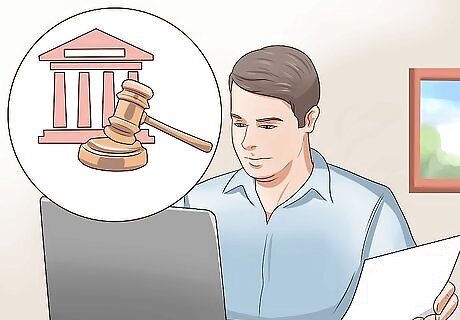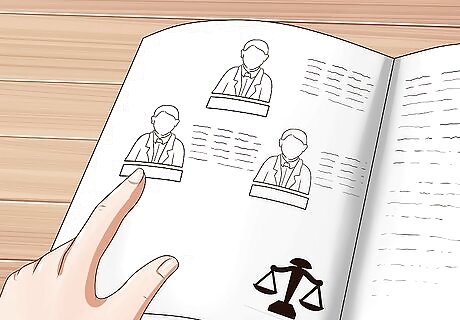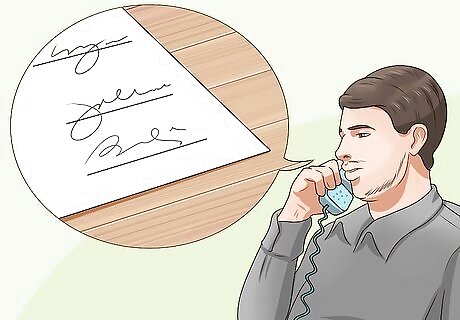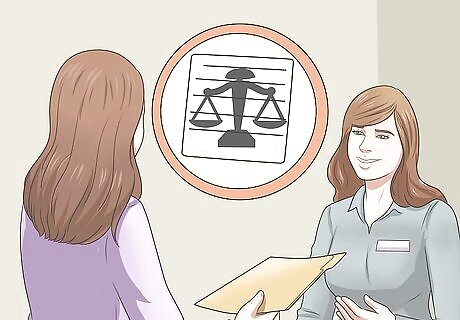
views
Researching the Process

Research state law. The process and conditions you'll need to meet when recalling a mayor will vary from state to state. Check your state statutes for information specific to your state. You can usually find the revised code or state statutes for your state online. If you are unable to find the information online, it should also be available in print form at any public law library. When looking at the state statutes for local recall information, pay special attention to all deadlines, signature requirements, and ground requirements. All states set different requirements concerning the number of signatures a recall petition must have. Most states have time limits on when a recall petition can be commenced and how long that petition may circulate. Some states will also demand that certain grounds be met before a recall petition can be accepted.

Check municipal law. In addition to state law, each municipality may have its own set of laws concerning the recall process. You'll need to check municipal law concerning the recall of local officials, too. Oftentimes, your city's municipal code will be available online. If this is not the case or you are unable to find it online, you should be able to find a copy at most local public law libraries or through most city agencies. As with state law, pay close attention to deadlines, signature requirements, and other restrictions placed on the recall process. Be aware of conflicts between state and local law. If municipal law violates state law in some manner, the state law will usually have power over the municipal law if the municipal law is questioned in court.

Verify the mayor's position. Some city mayors have more power than others. Depending on the circumstances, your mayor may or may not be governed by recall law. Contact city hall or look in your city's municipality code to learn about the role of mayor in your city. Some mayors are little more than ordinary council members, while others possess a distinct type or amount of power within the city government. In particular, determine whether your mayor is a member of the legislative or executive department, then find out if there are different recall procedures for each department. Mayors who have no voting power are strictly members of the executive department and may not be considered members of the governing body, but mayors who can vote alongside other council members are members of the legislative or governing body.

Consider the grounds for recall. After reviewing state and municipal code, ask yourself if you have grounds for recalling the mayor. If your reasons for wanting to recall the mayor are deemed insufficient, you will be unable to move forward with the process. Many states and cities do not require you to meet any specific grounds when recalling a mayor. When states and cities do demand specific grounds for recall, those grounds are usually fairly basic. They may include reasons like misconduct in office, incompetence, or failure to perform official duties.
Filing a Petition

Determine how many signatures you need. Review state and municipal code to determine how many signatures you will need for your petition of recall to succeed. Contact your city hall to inquire about the exact number. State and local law will usually describe the requirement as a certain percentage of the municipal voting population, based on the number of votes cast in the previous municipal election. This amount will usually vary from 10% to 40% of voters.

Write the petition. The petition should directly state your intent and your reasons. Make sure that the language is easy to understand and that the petition thoroughly conveys your stance. The petition should be titled "Petition for Recall." Directly beneath the title, you should state the position of the official ("mayor") and the name of the mayor. Make a concise argument for recall. Explain your key points in one paragraph, if possible. When additional documentation or evidence is needed, include that information beneath your summarizing paragraph.

Create a signer's form. Attach a form to the petition for supporters to sign. At the top of the page, write the title of the petition and your first summary paragraph. Divide the form itself into four to six columns. You must include columns for printed name, address, phone number, and signature. You may also need to include a fifth column for the date and a sixth column for voter registration number, but this is not always necessary.

File a notice of intent. After you have the petition and signer's form ready, you should fill out a "notice of intent to circulate a petition." The name and office (“mayor”) must be directly stated on the notice. In 300 words or less, you should also state the reasons for your petition. You may need to provide a certain number of signatures (usually one to five) at the bottom of this notice, as well. Depending on municipal law, you will need to file this notice directly with the city hall and/or publish it at least once in a daily newspaper circulated around the city. Make sure that you are starting the recall process on time. Some state and local law may prevent a petition for recall from being filed before the mayor has been in office a minimum amount of time or within a certain amount of time until the next general election.

Gather enough signatures. Once the notice of intent has been filed, you should immediately begin to circulate your position. Only registered voters should sign your petition, and all columns of the signer's form should be filled out for each signature. There are many different ways to circulate a petition, and you'll need to get the word out using as many methods as possible to ensure success. Speak to people in person, call known voters, and spread the word online. You can also ask local newspapers, radio stations, and television news stations to provide coverage.

File the petition on time. File your official petition and the signatures you collected with the city clerk by the legal deadline for your petition. Collect as many signatures as possible within the time limit. It is better to greatly exceed the minimum number of signatures than to barely meet it since some of those signatures may not be considered valid. The time limit will vary by state and city, but it usually ranges between 40 and 160 days.

Wait for the petition to be processed. After submitting your petition and signatures, the city clerk will need to verify the signatures. State or local law will set a time limit on signature verification. In most cases, signatures must be verified using a specific procedure within 30 days. If enough signatures are verified, the city clerk will send you a notice of sufficiency indicating that the petition has passed and that a recall election will take place. If your petition does not have enough valid signatures, you will receive a notice of insufficiency and the process will end there. No recall election will take place.
Holding the Recall Election

Wait for a date. Once the city clerk verifies a petition and sends it to the city council, the council must immediately set a date for a special election. The special election will usually be at some point between 90 and 180 days after the date the petition passes. The city council is legally obligated to make the date of this special election known to you, as the person who filed the petition. While the information will be made public, however, the city is under no obligation to spread word of it throughout the municipality.

Spread the word. As soon as you know when the recall election will take place, you should begin notifying voters within the city. Begin by contacting those who signed the recall petition. Let them know that the petition passed and tell them the date of the recall election. Spread word to the rest of the city's voting population in the same way you spread word about the petition itself. Contact people in person, by phone, and online. Ask the local media to cover the recall election, as well.

Cast your vote. On the day of the election, go to your standard county-appointed voting location and cast your vote to recall the mayor. Note that all regulations governing municipal elections in your city will apply to this recall election. The name and office ("mayor") should appear at the top of the recall ballot. If certain individuals have been nominated to succeed the mayor, those individuals will be listed on the ballot, too. Any statement published by the proponent of the recall will usually be included in the ballot. The mayor's response will be included, as well.

Wait for the results. When the election ends, the ballots will be counted. If a majority of votes approve the recall of the mayor, the mayor will be recalled. If a majority does not approve the recall, the mayor will stay in office. If the ballot listed candidates to succeed the mayor, the candidate who received the highest vote will win (only assuming the majority passed the recall).



















Comments
0 comment